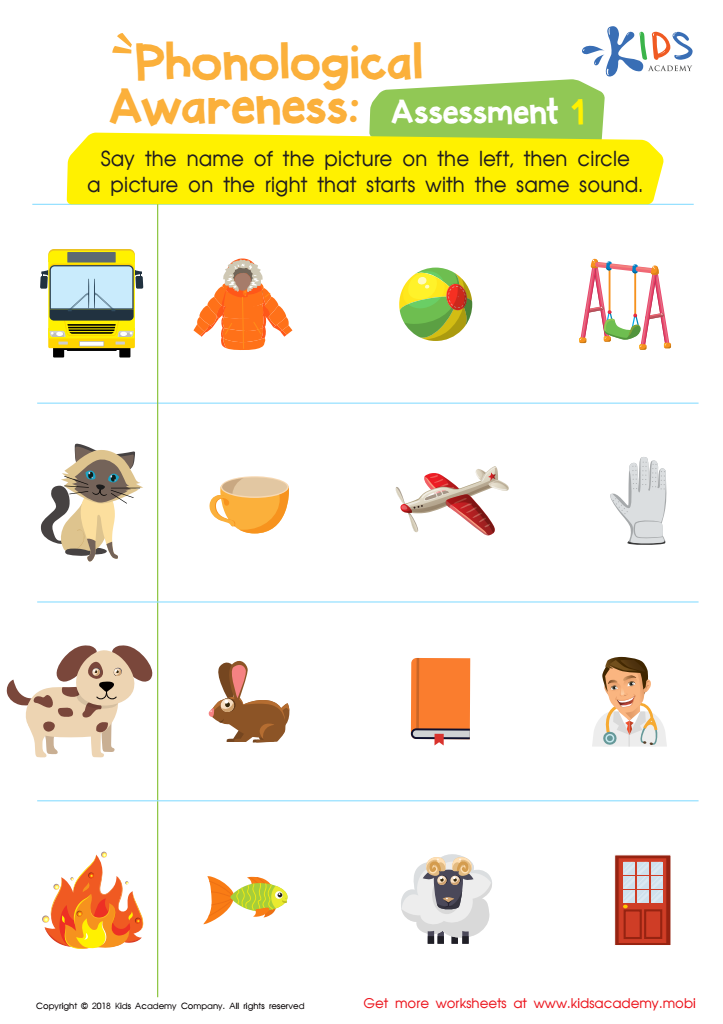Letter recognition Normal Elementary Phonics Worksheets for Ages 3-8
3 filtered results
-
From - To
Explore our "Letter Recognition Normal Elementary Phonics Worksheets" designed for children ages 3-8! These engaging and age-appropriate resources help young learners identify and differentiate letters, laying a strong foundation for reading and writing skills. Each worksheet features fun activities such as matching, tracing, and coloring, making learning enjoyable and interactive. Our worksheets encourage early literacy development through phonics, allowing kids to strengthen their understanding of the alphabet. Perfect for both classroom settings and home learning, these materials provide a comprehensive approach to mastering letter recognition. Equip your child with essential skills for their educational journey today!


Long and Short U Worksheet


Long and Short E Worksheet


Phonological Awareness: Assessment 1 Worksheet
Letter recognition is a fundamental building block for early literacy, and parents and teachers should prioritize it for children aged 3-8. Mastery of letter recognition is vital for various reasons. First, it lays the groundwork for reading and writing skills, enabling children to decode words and understand their structure. As they identify different letters and sounds, they also develop phonemic awareness, which is essential for spelling and vocabulary acquisition.
Moreover, recognizing letters fosters cognitive development, as it encourages children to make connections between visual symbols and sounds. By engaging with letters in playful and interactive ways, such as games and phonics activities, they enhance their learning experience while developing a love for reading.
Additionally, early letter recognition helps build self-confidence. As children gain proficiency in identifying letters, they become more enthusiastic about participating in literacy activities and show a willingness to explore books independently.
In a world increasingly driven by literacy, equipping young learners with foundational skills prepares them for academic success. Investing time in Letter recognition nurtures a resilient and curious learner, ensuring they are well-prepared to tackle the challenges of reading and writing in their future education. Thus, parents and teachers play a crucial role by actively supporting this developmental milestone.
 Assign to My Students
Assign to My Students









